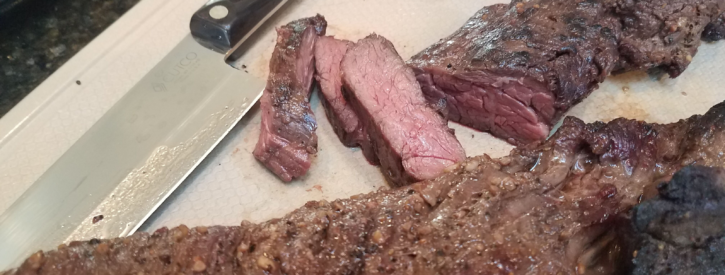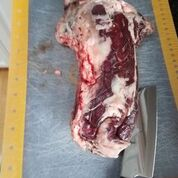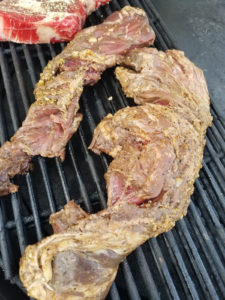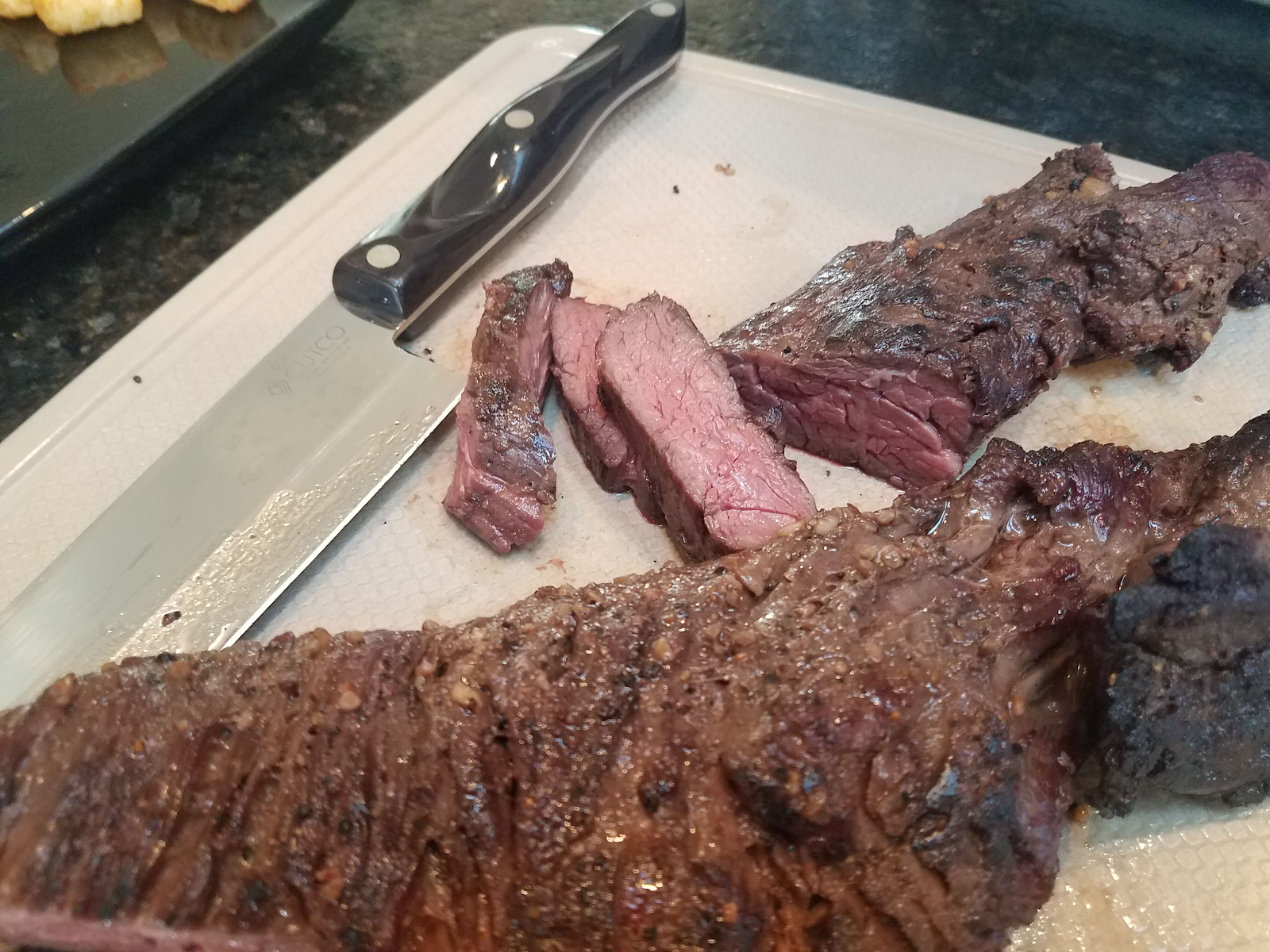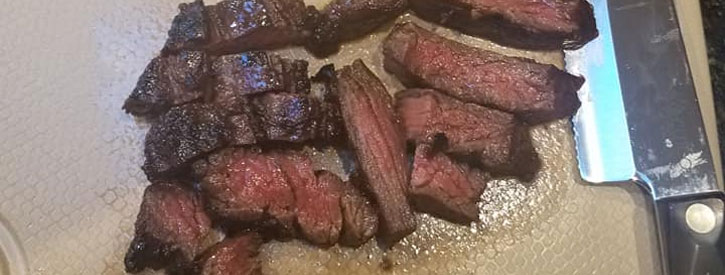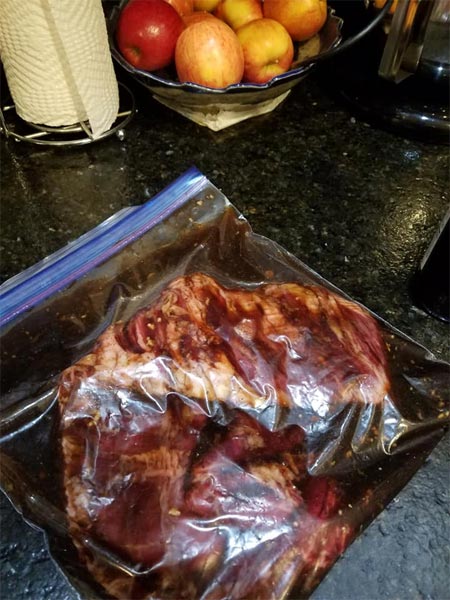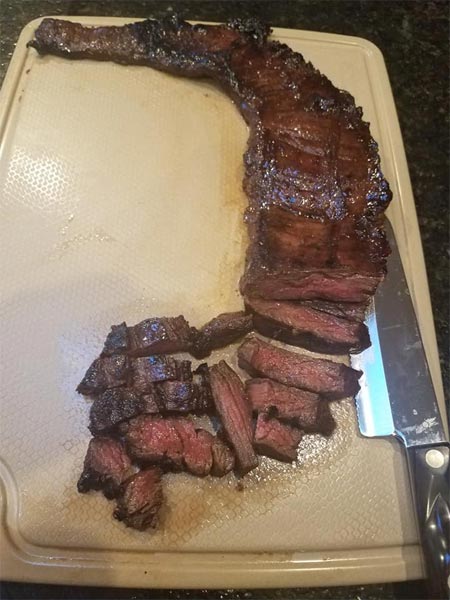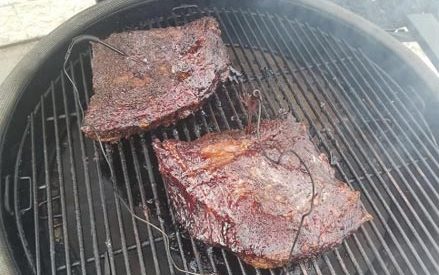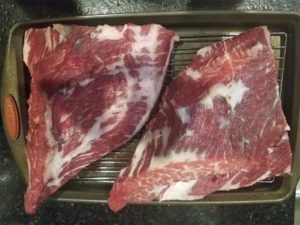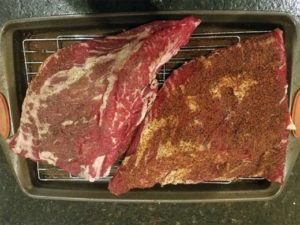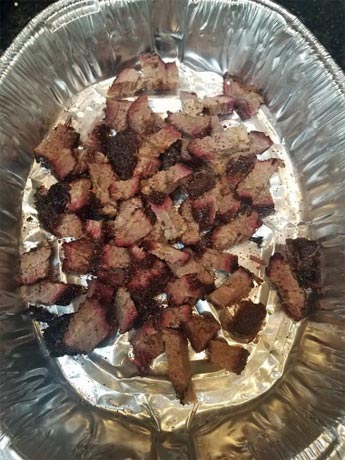Hanger Steak/ Hanging Tender
The hanging tender is not very well known but those who know about it and how to cook it are always coming back for more. This is a muscle that hangs from the diaphragm of the cow along the lower part of the belly. It does very little actual work and as a result is very tender and full of flavor. We wanted to test out a basic recipe to share with everyone to give you a bit of confidence in trying out this wonderful cut.
First, thaw the hanger steak in cool water or the refrigerator overnight. Trim most of the fat off and separate the two muscles so that you have two long pieces of meat.
Marinate:
Place steak in ziplock bag or sealable container. Add 3 T oil, 1 T soy sauce, 1 T Worcestershire sauce, ½ T Rice Wine Vinegar, 1 T dried minced onion, 1/2T dried minced garlic, ½ T kosher salt, ½ T coarse ground bl. Pepper, ½ T garlic salt, (or your favorite steak rub seasoning).
Massage everything to make sure the steak is well coated and place it in the fridge for a minimum of 6 hours. (we always try to do it overnight)
Grill/Oven:
We highly recommend using a meat thermometer when cooking and grilling beef. This helps to ensure that you do not overcook. In our world it is a very sad day when beef is overcooked.
Remove the hanger from the marinade and allow it to come to room temperature while you bring the grill or oven up to a low 200-300-degree temperature.
Place the hanger in the oven or on the grill until the internal temperature is 10 degrees from your finished temperature. (We did 120 degrees for a medium rare finish)
Remove the steak from the grill/oven and increase the temperature.
If you are using the grill increase temperature to 400-600 degrees (Basically as hot as you can get it)
If you are using an oven/stovetop use a skillet (cast iron would be great) and get it as hot as you can for searing.
Sear all sides to create a nice crust. Warning: If you are searing indoors be sure to be prepared because it will create some smoke.
Rest: (Do not skip this step if you want a juicy steak)
It is important to allow the steak to rest for 5-10 minutes. (Cover lightly with aluminum foil.)
Then finally cut slices across the grain, serve and enjoy!
A few tips
- Cutting across the grain increases the tenderness and is a very important step
- The Hanger steak does not have a great deal of internal marbling, so it is not recommended to be cooked past medium. Cooking past medium will cause the steak to become more tough. Medium rare is the way to go!

